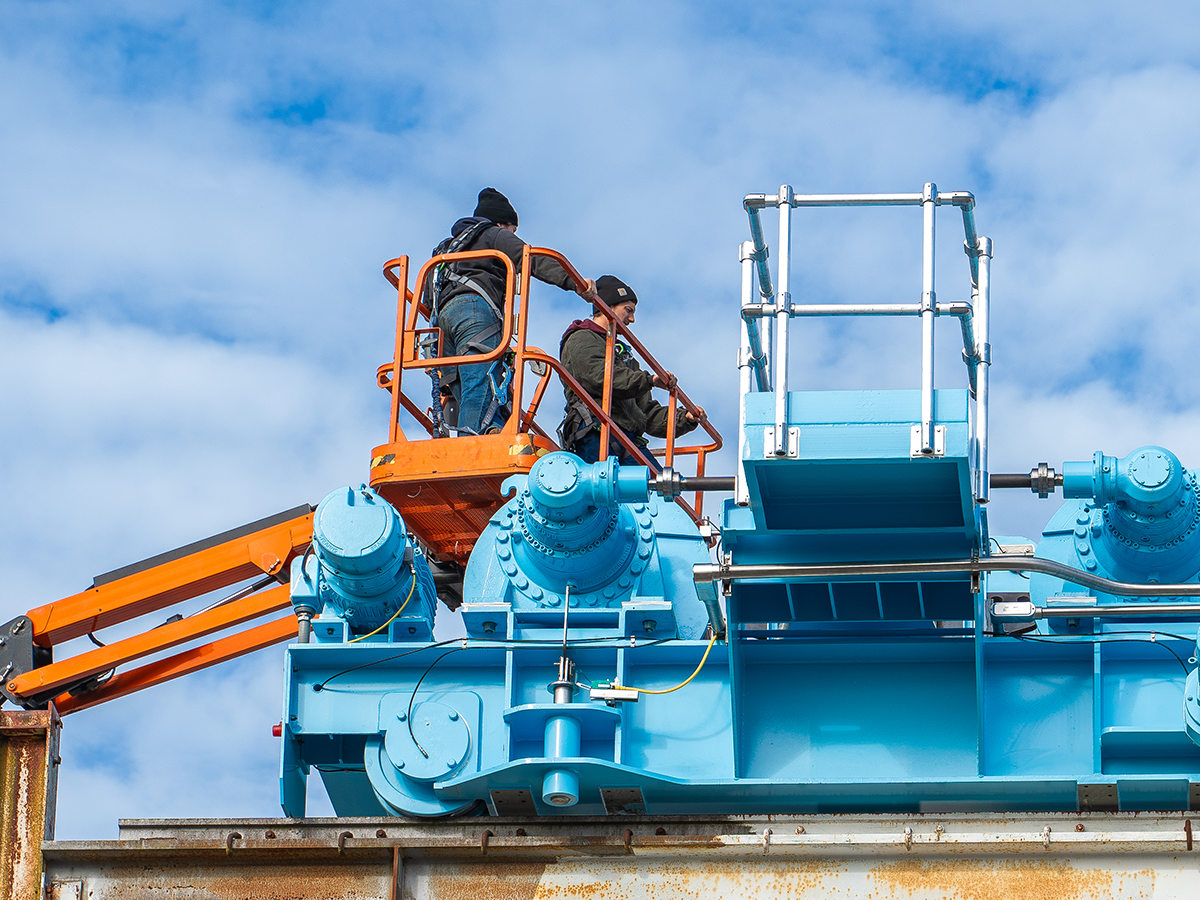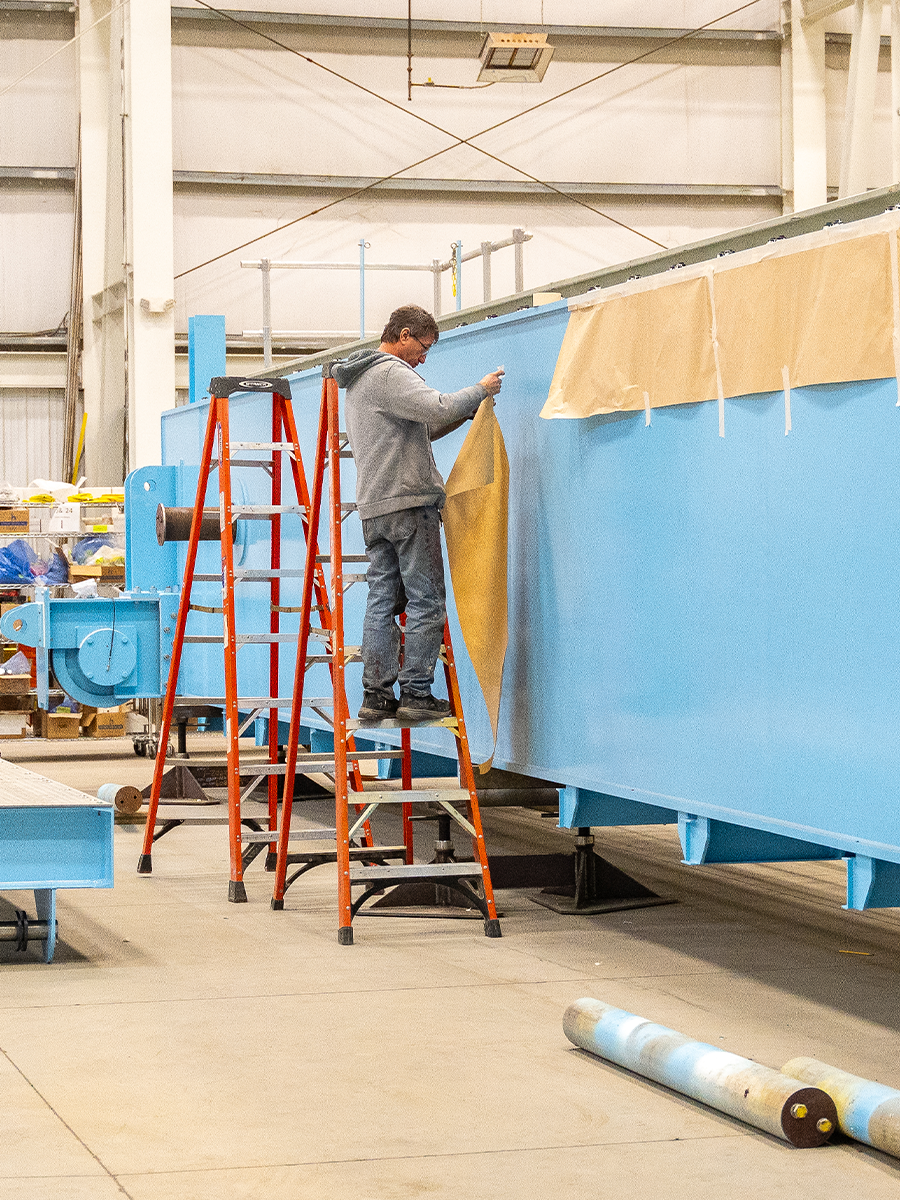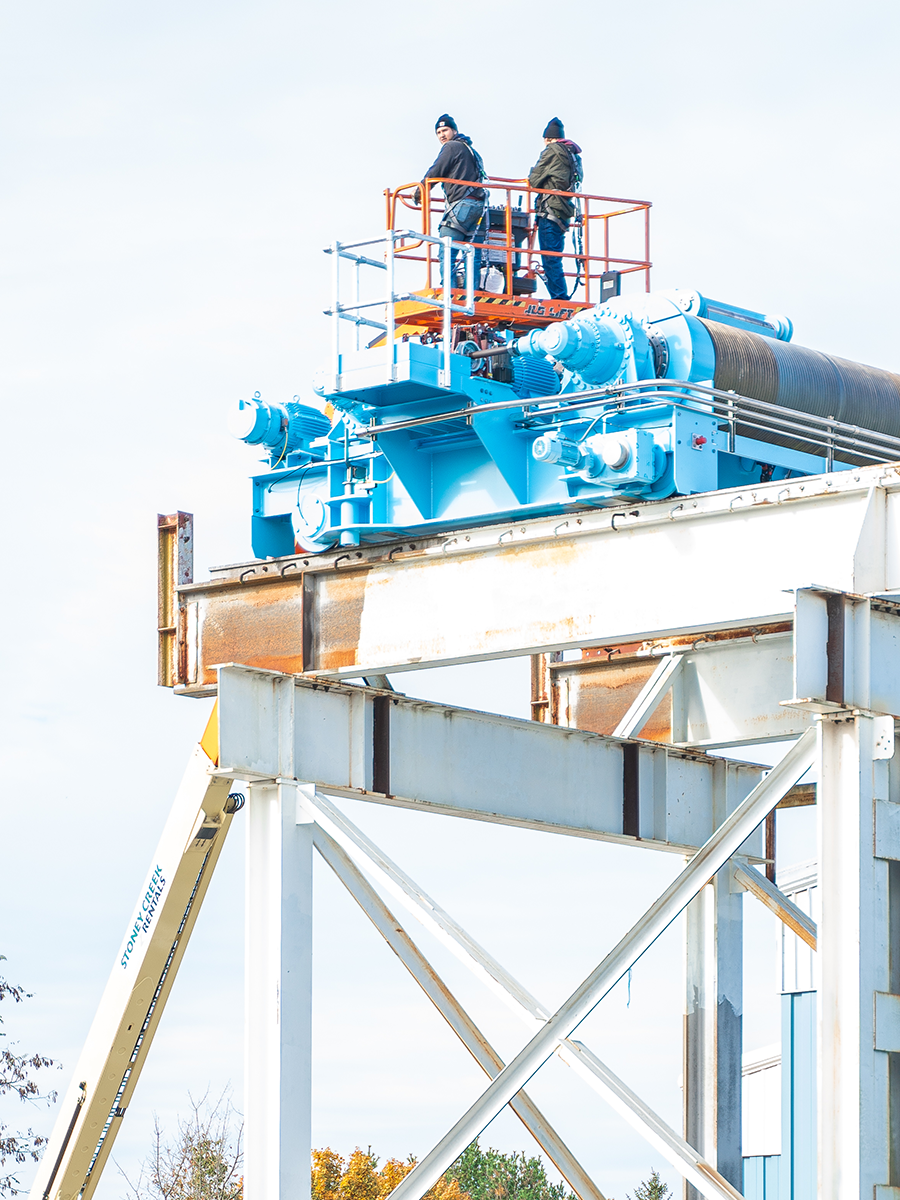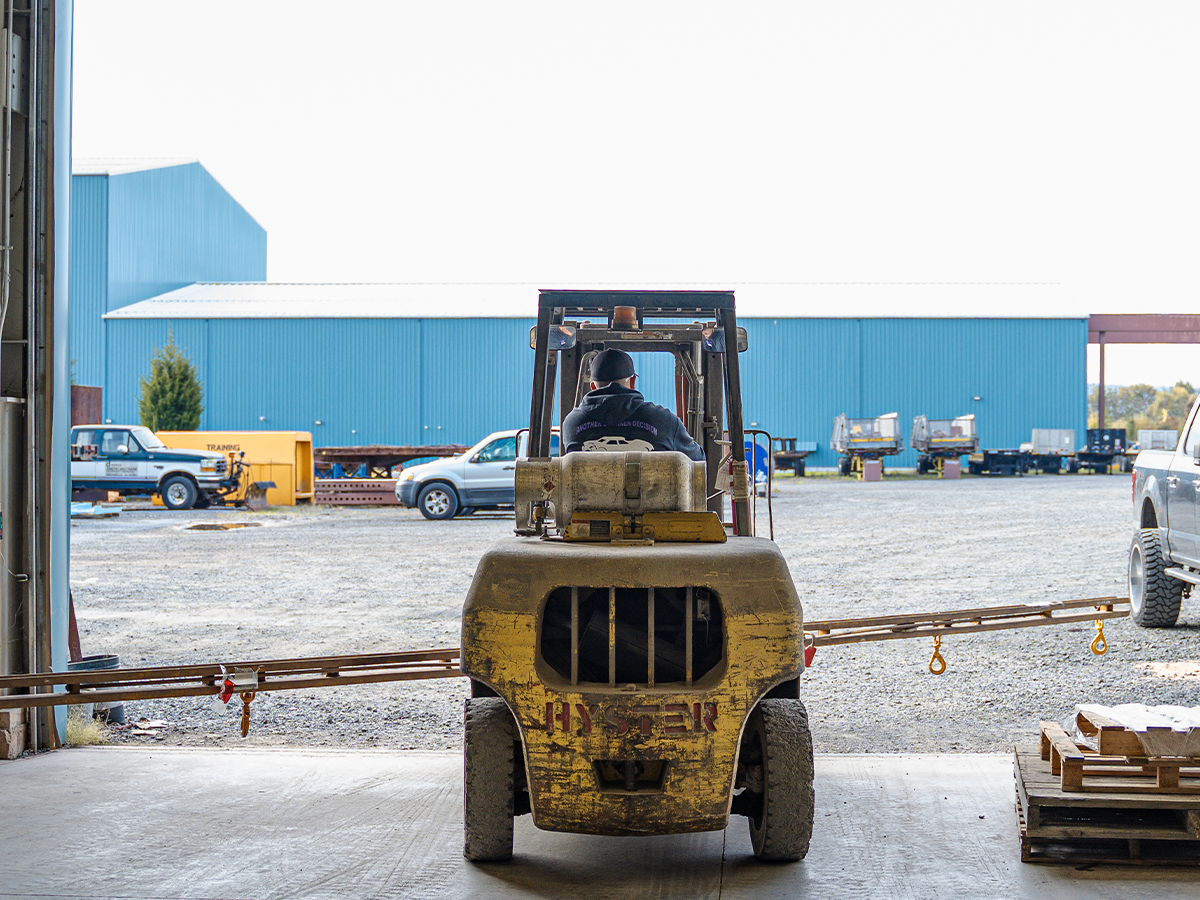Innovative Lifting in Wastewater Management
Wastewater Treatment Equipment
American Crane & Equipment Corporation proudly serves a wide range of industries, providing top-quality services and solutions for diverse applications such as cleanroom cranes, aerospace critical lifts, and water management equipment. Frequently used in wastewater treatment applications, our high-performance lifting solutions set the standard for specialty handling.
Wastewater treatment is the process of converting water that can no longer be used into a more purified state so that it can be released without polluting other bodies of water. There are many sources of wastewater, including bathing, municipal septic systems, rainwater runoff, manufacturing industries, and more. Regardless of its origin, wastewater contains contaminants that are dangerous to the environment without treatment.
The wastewater treatment process involves various heavy lifting applications that rely on high-quality cranes. American Crane understands the unique needs and challenges of this industry and delivers customized lifting solutions for wastewater treatment plants.
Wastewater Treatment Guidelines and Regulations
To ensure safety and reliability across all processes, the equipment used in water system management plants — such as heavy-duty jib cranes, bridge cranes, and gantry cranes — must meet strict environmental standards.
Wastewater, or used water, must be treated before being released back into the environment. Not only is this key to preserving natural marine environments and fisheries, but it also fights pathogens and harmful downstream microbial effects. Sinks, showers, washing machines, toilets, dishwashers, and countless other commercial appliances and products all create wastewater.
Treatment plants work to remove or reduce pollutants and suspended solids before safely releasing the remaining water, or effluent, back into the natural environment. These plants handle all types of waste, oils, and chemicals. The acceptable processes and standards for regulating these waters are set by the United States government and include:
- Industrial Effluent Guidelines. Administered by the United States Environmental Protection Agency (EPA), these serve as national regulatory standards for the management of wastewater discharged into surface waters, as well as municipal sewage treatment plants. The EPA bases these standards on the performance of treatment and control technologies.
- Clean Water Act (CWA). This was first enacted in 1948 to establish a basic structure for regulating water pollutants and managing the quality standards for United States surface waters. Water quality standards for contaminants and pollution discharge are managed and enforced by the EPA through this act.
- NPDES. The CWA’s National Pollutant Discharge Elimination System (NPDES) requires all facilities to obtain a permit before discharging pollutants into waterways. The NPDES regulates the discharge of pollutants from municipal and industrial collection systems and treatment plants.
Navigating Wastewater Treatment Stages
The Wastewater Treatment Process
The process of wastewater treatment can be divided into several distinct steps:
- Step one. First, preliminary treatment separates large pieces of trash using screens and grinders, protecting equipment and isolating heavy material to be sent to landfills. Waste materials and the primary sludge are pumped through a cyclone degritter for removal.
- Step two. Primary treatment relies on sedimentation and clarification equipment to filter and remove finer sand, grit, and gravel. Using chemical and physical methods, primary treatment reduces chemical oxygen demand (COD), total suspended solids (TSS), and biological oxygen demand (BOD).
- Step three. Secondary treatment and disinfection remove impurities and harmful organisms through chemical and biological cleaning processes. This may involve chlorine contact tanks, in which water is literally bleached with sodium hypochlorite.
- Step Four. Finally, sludge treatment handles the remaining material, which is still 99% water. The solid material is separated through thickening then run through the digestion process to make it safe for the environment before its final dewatering.
Advancing Wastewater Treatment Capabilities
Applications
Solutions from American Crane provide reliable and effective material handling for various wastewater management and treatment applications. Specialty cranes are essential to building and maintaining the systems that treat effluent. Wastewater treatment facilities utilize complex equipment and processes that require regular maintenance. Lifting solutions from American Crane make these jobs easier and ensure that these facilities are always kept in the best possible operating conditions.
Our material handling equipment provides efficient lifting and placing for the following wastewater equipment and components:
- Building and Maintaining Treatment Systems: Essential for constructing and upkeeping effluent treatment facilities.
- Supporting Complex Equipment Maintenance: Facilitating regular upkeep to ensure optimal facility operation.
- Efficient Material Handling: Ideal for lifting and positioning critical components like plant filters, valves, motors, and blowers.
- Enhancing Digesters Operations: Making handling and maintenance tasks simpler and more efficient.
- Ensuring Regulatory Compliance: Our cranes aid in thorough equipment inspections, adhering to stringent industry standards.
Our state-of-the-art cranes are specifically designed to facilitate equipment inspections and ensure compliance with the stringent regulatory standards of the wastewater industry. With their advanced features and capabilities, our cranes make it effortless to thoroughly examine and evaluate the condition of equipment and ensure that it meets all the necessary compliance requirements.
Specialized Lifting Technology for Wastewater
Wastewater Industry Lifting Solutions
Wastewater management requires a significant amount of heavy lifting, and specialty cranes are key to this process. Depending on the application, various types are available, including:
- Bridge Cranes. These are used for changing and lifting plant filters. They offer superior load positioning due to their 3 axis design.
- Jib Cranes. Jib cranes are used for changing and lifting plant filters. These can be floor mounted and offer circular space coverage. Jib cranes sometimes require special foundations or support. Light capacity jib cranes may be mounted directly to a standard concrete floor.
- Gantry Cranes. These are used for lifting, moving, and placing pumping stations, motors, valves, and blowers, as well as digester removal and rehabilitation. Highly versatile gantry cranes are not mounted, allowing for free mobility and custom height adjustments. These specialty cranes are used for moving heavy loads in outdoor settings, with the ability to safely and efficiently handle the tremendous weight.
Transforming Wastewater Treatment Processes
ACECO’s Solutions for the Wastewater Industry
The team at ACECO is proud to provide top-quality tools and solutions for even the most challenging material handling scenarios, whether managing intricate regulations or handling highly sensitive loads. Our overhead solutions meet and exceed CMAA standards, ensuring increased workplace safety and environmental protection while optimizing installation, management, and equipment movement processes.
Our team is highly reliable, responsive, and experienced in specialty applications. We have worked extensively in the wastewater sector and can provide various services, including digester maintenance, lifting solutions for wastewater management, and inspection and installation services.





